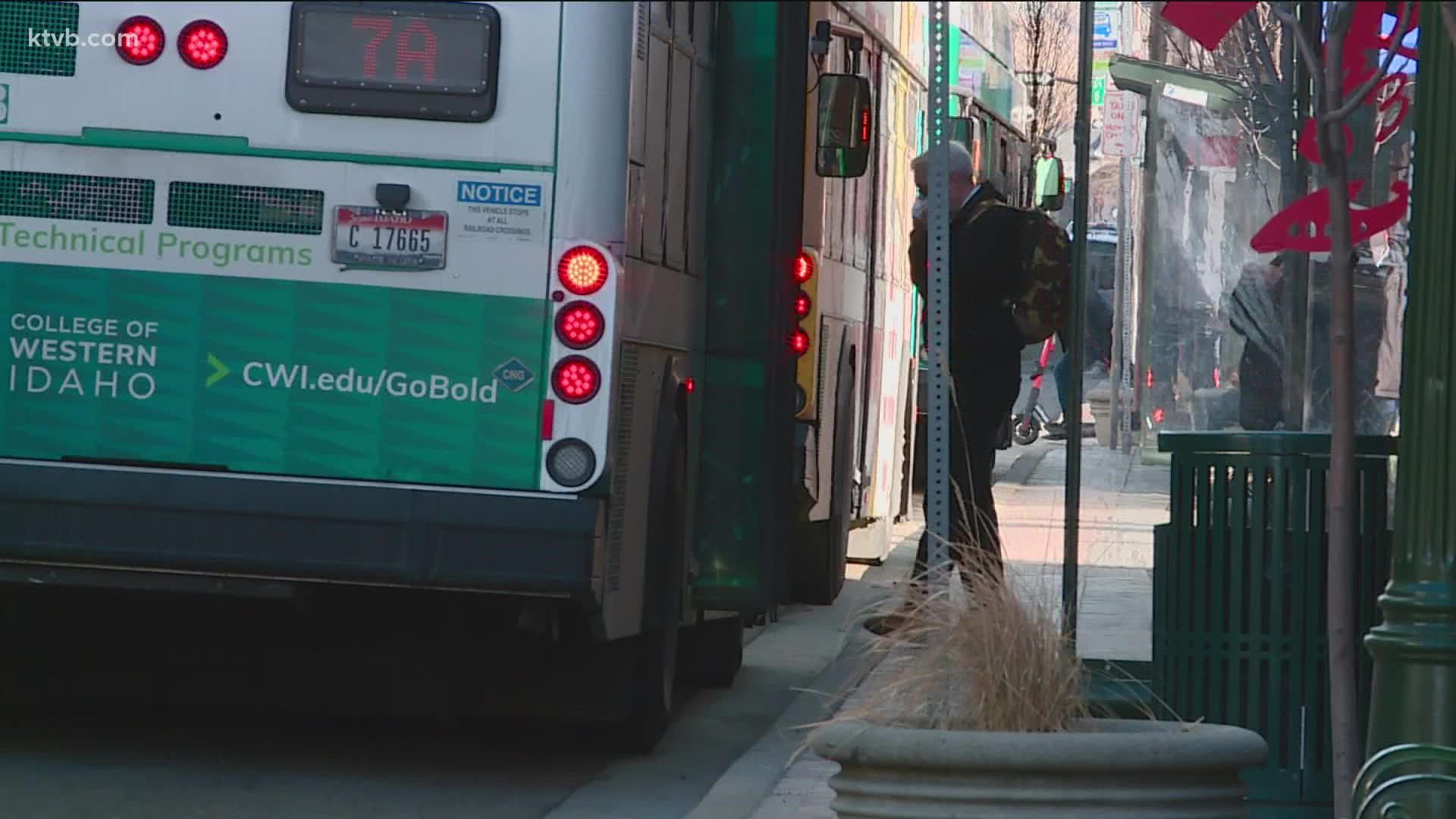BOISE, Idaho — As gas prices continue to climb across the nation, people are figuring out different modes of transportation to get around the Treasure Valley. Valley Regional Transit (VRT) believes if past history proves anything, ridership on public buses could increase over the next several weeks.
"We really haven't seen any spike in ridership just yet, we're trying to get back some of the existing riders that we have before the COVID-19 pandemic," VRT public information officer, Mark Carnopis said.
Carnopis added VRT has seen an increase in callers and visitors to its help desk phone line and website.
"A percentage of those calls are people saying, 'I'm tired of high gas prices, what kind of services do you have?' We expect those numbers to grow," Carnopis said.
Carnopis, who has been with VRT for 19 years, said there is a direct parallel between rising gas prices and the transit company's ridership numbers. He recounted in 2008 when gas prices across the U.S. were just over $4 -- a record high at the time -- VRT saw about a 15% jump in ridership within cities and counties, while inter-county ridership saw a 25% increase.
"People at that time were just tired of seeing these gas prices," Carnopis said. "We were able to accommodate many of them -- especially in the inter-county services because that provides a longer length of travel."
While it could be easy to base the current trend off past similar instances, it is different this time around, because of Coronavirus and the disruption it caused the transit service over the last few years.
In 2019, VRT had a total ridership of 1.2 million, with the Boise/Garden City's 17 routes seeing a ridership of more than one million and the Nampa/Caldwell on-demand service ridership seeing more than 46,000. VRT's inter-county had more than 86,000 in ridership for 2019.
Carnopis said at one point during the pandemic, VRT's ridership dropped 40% compared to 2019's total. According to VRT's FY2021 fact sheet, 2021 saw around a total of 837,500 in ridership.
"We're slowly getting those [pre-COVID-19] numbers back," Carnopis said. "It hasn't been a meteoric climb, it's been very stable and steady."
Carnopis said it is again too early to tell what ridership numbers could look like in the next few weeks, but there is potential to see ridership back at pre-COVID levels. He said high gas prices could help, but VRT would also need former riders to come back too.
Many people stopped traveling to the office every day because of former stay-at-home orders and working remotely due to the pandemic.
"It's a whole new business environment out there, we don't know how many people are still working from home and will continue to work from home," Carnopis said.
VRT also is not feeling the negative effects of high gasoline prices because Carnopis said "almost 100% of their fleet run on natural gas." Those prices have not spiked nearly as high. He added the transit company is also moving their fleet to all-electric vehicles, with several already in service.
The federal government mandates riders must wear a face covering when riding the bus and when inside a VRT facility. The only exception is those under the age of two.
VRT offers one-way, one-day, 31-day, and annual passes. Most buses require local fare, except intercounty routes 40, 43, and 45, which require universal fare. One-way rides are $1.50 and one-day rides are $2.50.
For more information on how to use the VRT system, routes and other information click HERE.
Watch more Local News:
See the latest news from around the Treasure Valley and the Gem State in our YouTube playlist:

